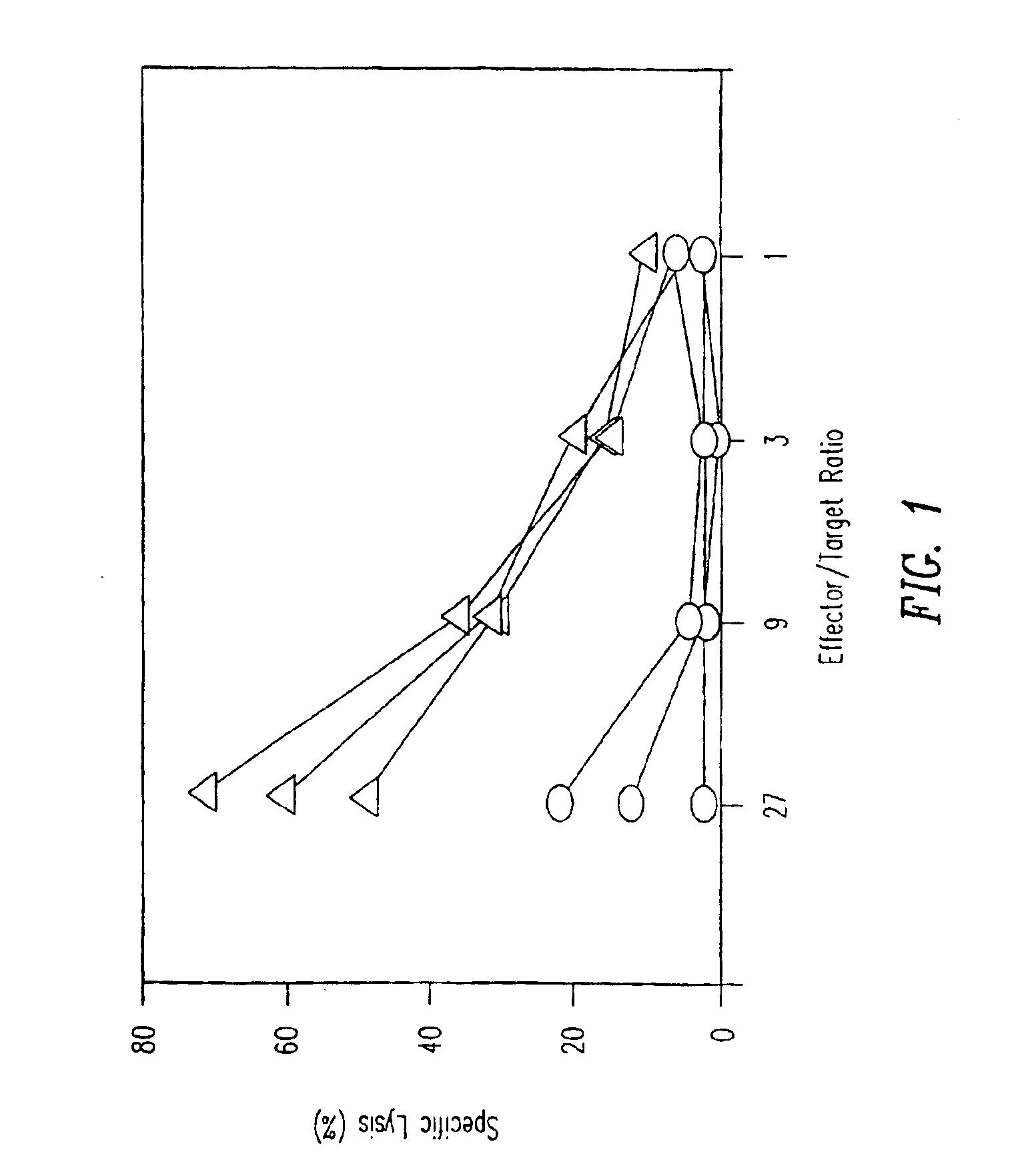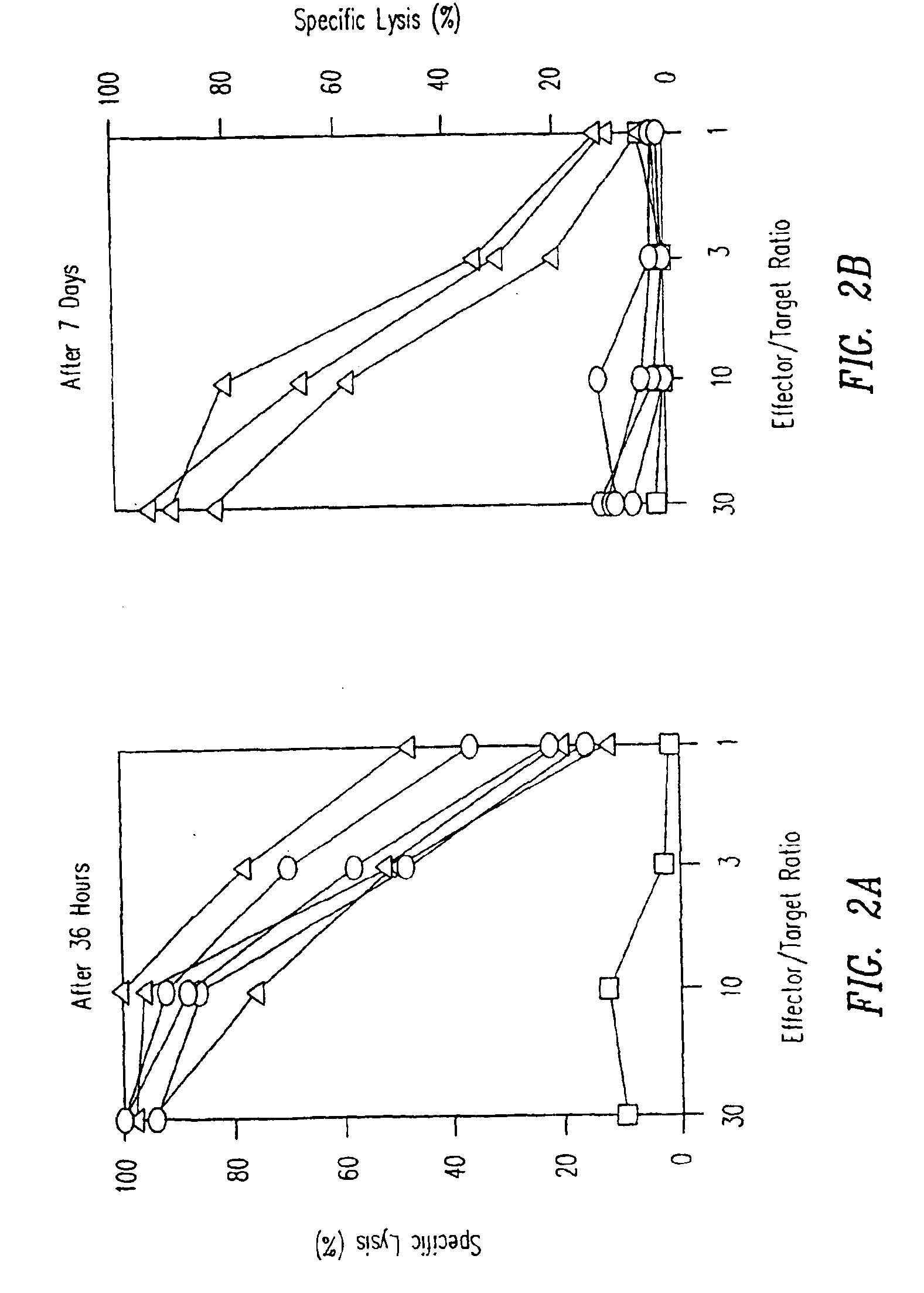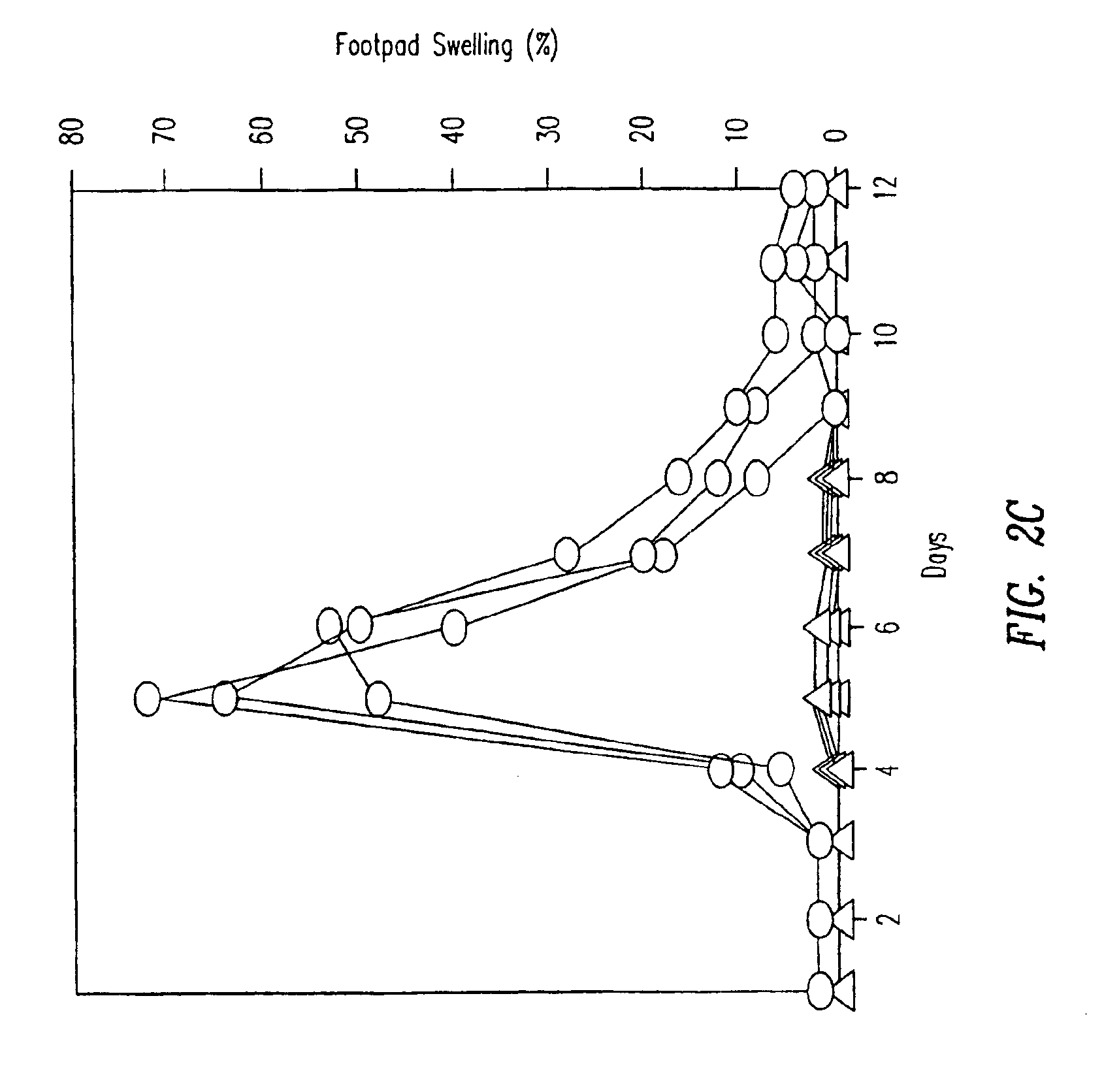Method of inducing a CTL response
a ctl response and antigen technology, applied in the field of inducing a ctl response to an antigen, can solve the problems of insufficient vaccine design, limited success, and inability to induce strong ctl responses
- Summary
- Abstract
- Description
- Claims
- Application Information
AI Technical Summary
Benefits of technology
Problems solved by technology
Method used
Image
Examples
example 1
Continuous Release of Peptide Antigen Using Osmotic Pump Induces Potent CTL Response in C5BL / 6 Mice
[0142]C57BL / 6 mice were either intravenously injected with a single dose of 50 μg p33 (including 500 ng GM-CSF) (circles) or were implanted with a micro-osmotic pump releasing a mixture of 50 μg of p33 and 500 ng GM-CSF over a time period of 7 days (triangles), or were left naive (data not shown). After 7 days mice were sacrificed to prepare single cell suspensions from the spleen. Spleen cells were restimulated in vitro for 5 days by p33 pulsed in the presence of low amounts of IL-2. Specific cytotoxicity was measured using 51Cr-labeled EL-4 target cells pulsed with p33. Specific lysis of EL-4 target cells without p33 was less than 16% for all effectors. The results are shown in FIG. 1.
example 2
Continuous Release of Antigen Induces CTL Immunity Against Virus in C57BL / 6 Mice
[0143]C57BL / 6 mice were either intravenously injected with a single dose of 50 μg p33 (including 500 ng GM-CSF. Pharmingen) or were implanted with a microsomotic pump releasing a mixture of 50 μg of p33 and 500 ng GM-CSF over a time period of 7 days, or were left naive. After 7 days specific CTL activity was assessed in vivo using anti-viral protection assays. C57BL / 6 mice were intravenously challenged with LCMV Armstrong strain (2×103 p.f.u.). After 4 days mice were sacrificed and LCMV titers were determined in spleens using an immunological focus assay. Mice implanted with osmotic pump showed significantly lower virus titers indicating active CTL immunity against the virus (Table V).
[0144]
TABLE VC57BL / 6 MiceVirus Titer (loglo)Single injection4.2Single injection4.6Single injection4.0Pump delivered2.2Pump delivered1.8Pump delivered2.0Unprimed4.8Unprimed3.8Unprimed4.4
example 3
Continuous Release of Antigen Maintains Potent CTL Effectors in TCR Transgenic Mice
[0145]TCR transgenic mice were either intravenously injected with a single dose of 50 μg p33 (circles) or were implanted with a microsomotic pump releasing a mixture of 50 μg of p33 (triangles), or left naïve (squares). After 36 hours mice were sacrificed to prepare single cell suspensions from the spleen which were assayed ex vivo for p33-specific cytotoxicity using 51Cr-labeled EL-4 target cells pulsed with p33. Similarly mice were either intravenously injected with a single dose of 50 μg p33 (circles) or were implanted with a micro-osmotic pump releasing a mixture of 50 μg of p33 over a time period of 7 days (triangles), or were left naïve (squares). After 7 days mice were sacrificed to prepare single cell suspensions from the spleen to assay ex vivo p33-specific cytotoxicity using 51Cr-labeled EL-4 target cells pulsed with p33. Specific lysis of EL-4 target cells without p33 was less than 18% for ...
PUM
| Property | Measurement | Unit |
|---|---|---|
| pH | aaaaa | aaaaa |
| median survival time | aaaaa | aaaaa |
| molecular weight | aaaaa | aaaaa |
Abstract
Description
Claims
Application Information
 Login to View More
Login to View More - R&D
- Intellectual Property
- Life Sciences
- Materials
- Tech Scout
- Unparalleled Data Quality
- Higher Quality Content
- 60% Fewer Hallucinations
Browse by: Latest US Patents, China's latest patents, Technical Efficacy Thesaurus, Application Domain, Technology Topic, Popular Technical Reports.
© 2025 PatSnap. All rights reserved.Legal|Privacy policy|Modern Slavery Act Transparency Statement|Sitemap|About US| Contact US: help@patsnap.com



